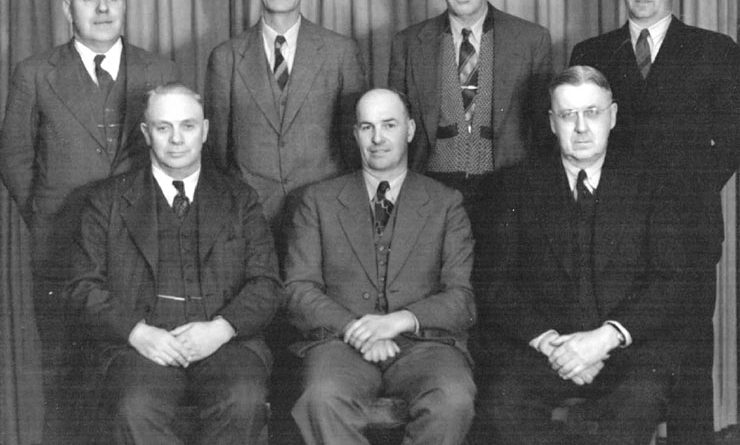Seventy-Five Years of Western Irrigation District
By Linda Jensen Times Contributor


Photo Courtesy of WID
And that is just what the Western Irrigation District, or WID, has been doing.
Celebrations with irrigators, a presentation for Historic Calgary Week, and a Strathmore Times article series, WID Memories, recognize and acknowledge the impact and contributions that families have made to this not-for-profit organization which is headquartered in Strathmore.
In the late 1800s, CP Rail, which would eventually connect all of Canada by railroad from the west coast to the east, promised new Canadian settlers arable land. By 1907, a dam and reservoir had been built at what is now Chestermere Lake, along with a canal connecting them to the Bow River. Canal networks were then constructed servicing an area of 41 township blocks ranging from Irricana to Carseland north to south and Chestermere to Cluny east to west. Irrigation ensured the land would be able to reliably grow crops even in dry years. After all, if the west could grow abundant crops, easterners would benefit from those crops, too.
In 1944, only 39 years after Alberta became a province, the WID was formed. Five members formed the original board: Jonathan Wheatley, George Boyack, James Harwood, Emile Cammaert and Jack McArthur. A number of descendants of the original board members are still on the irrigation roll of the district to this day. The first general manager was PM Sauder.
The first water systems included flood irrigation and trenches using shovels and manual labour on untilled land. Later, contour ditches and tarps were used to retain water and to recreate dam-like conditions. In 75 years, the WID has been transformed from manpower, horses and plows, gasoline engines, canals, a 200-foot volume gun and wheel move systems to backhoes, pipelines, low-pressure pivots and drip systems.
According to David McAllister, WID’s ninth and current general manager, the impact of these changes is profound.
“Flood irrigation now makes up only about three per cent of the district and low-pressure pivots, which are nearly three times as efficient, now make up 72 per cent. These kinds of savings mean the WID has never been more efficient in our use of water. WID irrigators are growing more food with less water than they ever have.”
Currently, WID provides water for the irrigation of 95,000 acres of farmland. As well, the WID conveys water for a variety of agencies including municipal users, such as the Wheatland Regional Corporation which services Rockyford, Standard and Gleichen, and the commercial sector, including CrossIron Mills Mall. Livestock farmers also have access to the water and rural properties can water lawns or yard sites. Fees are assessed for each acre irrigated and for each of the different contracts that are offered.
The opportunity to serve and contribute to the communities they operate in is important to the WID. “You serve who you know; there’s a face to every name,” said McAllister who added relationships are important to him.
When asked about the future for the WID, McAllister said strategic priorities are water security, water efficiency and financial sustainability.
“We will continue to invest in projects that will increase our access to water, maintain its quality and enable us to use it as efficiently as possible.”
This commitment to action is characteristic for the WID and has been demonstrated by their investment of over $100 million of their own money over the past 15 years to provide service now, and to sustain that service into the future.
In 2018, WID delivered water to the second-highest number of acres in its entire history and water quality was rated as excellent by Alberta Agriculture.
“The WID serves more acres with better quality water and higher efficiency than ever before and that builds on a legacy of contributions from past boards, staff, water users and community members,” said McAllister. “The WID is here to serve the communities that we operate in; working in partnership will continue our success for our next 75 years.”
